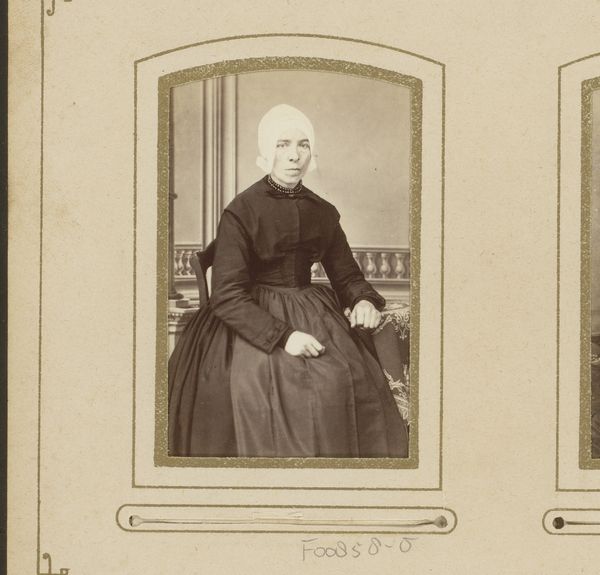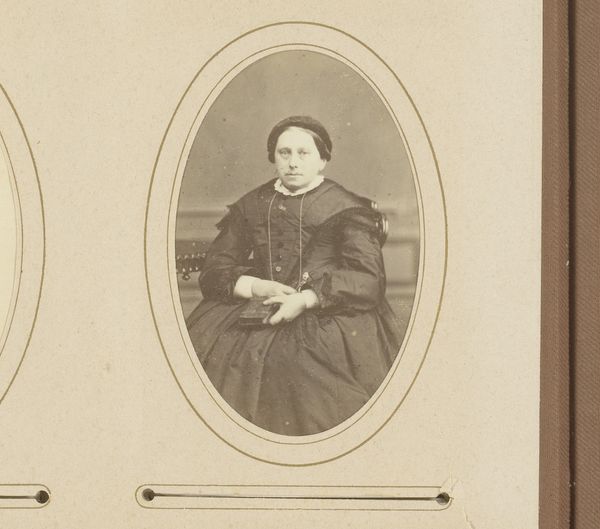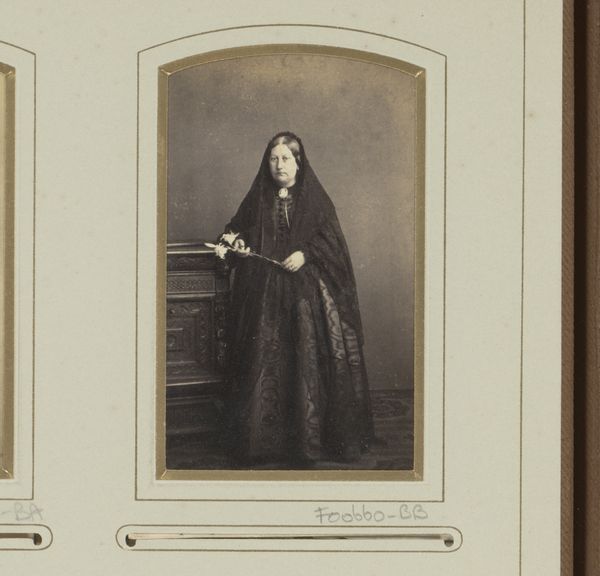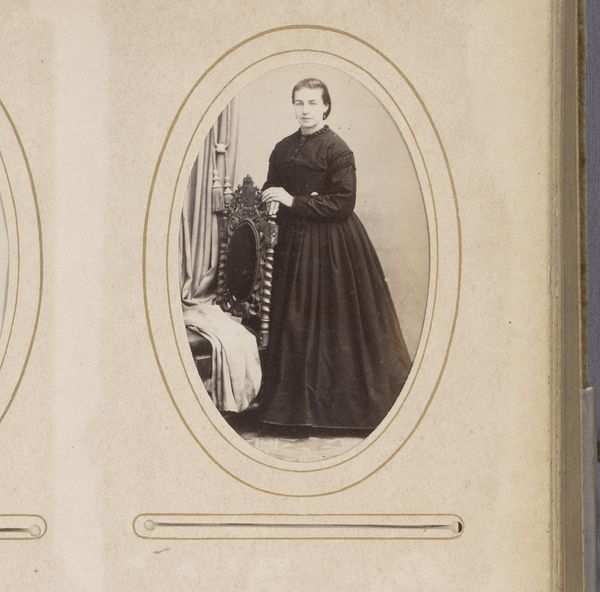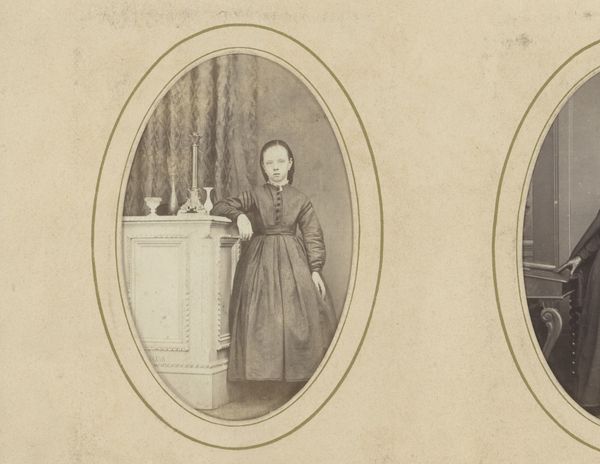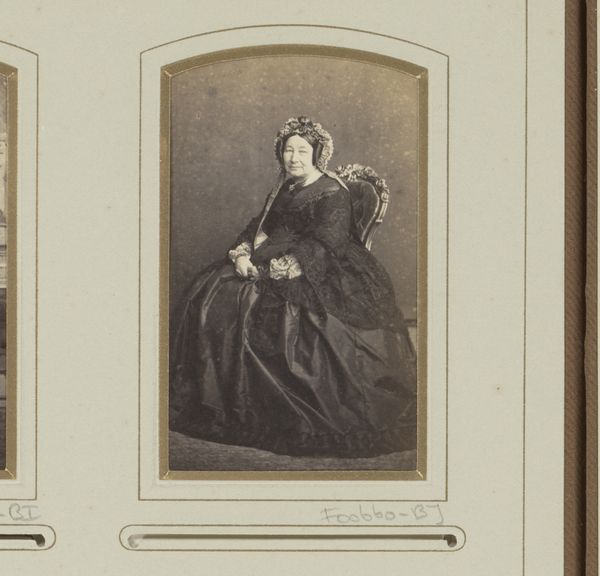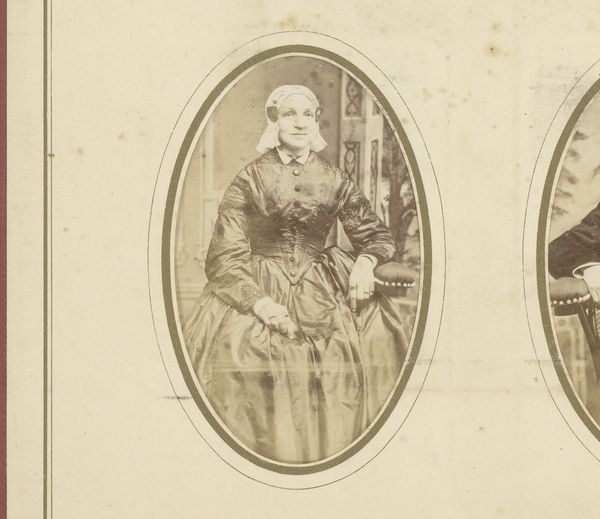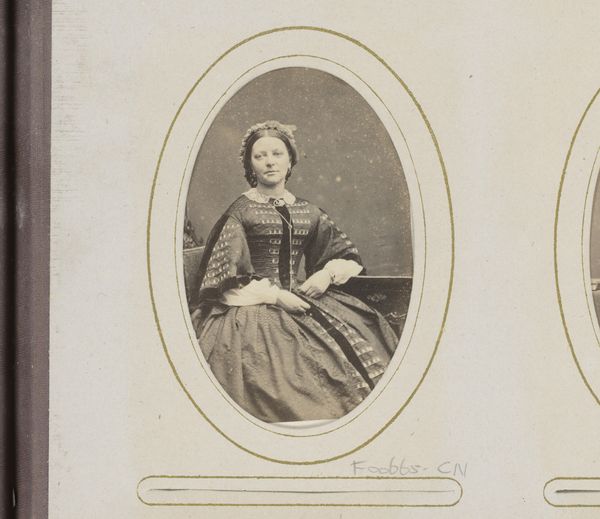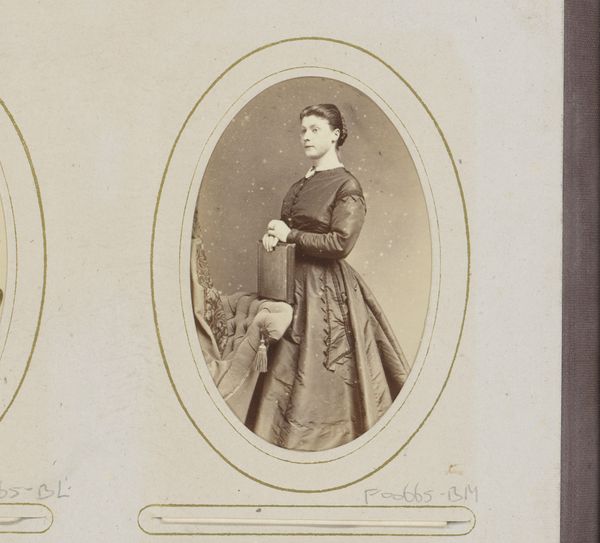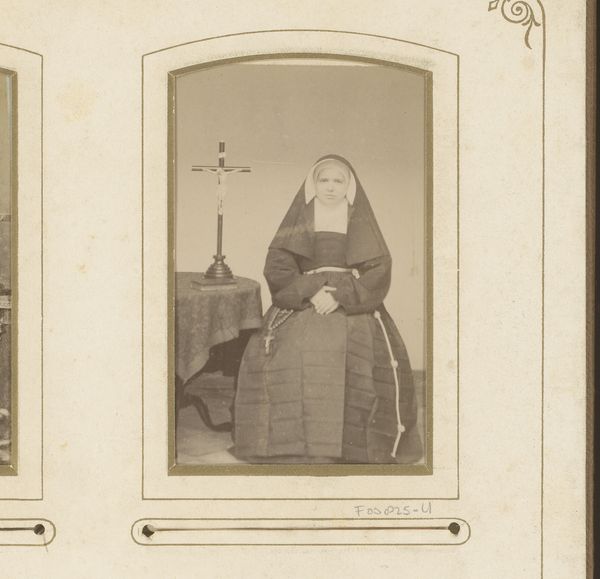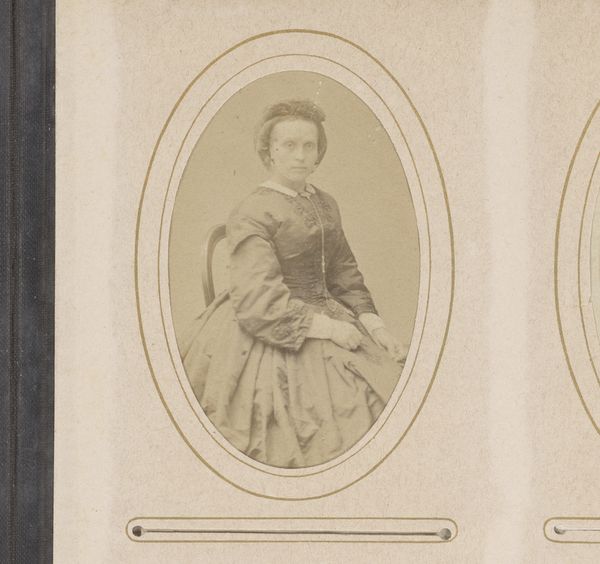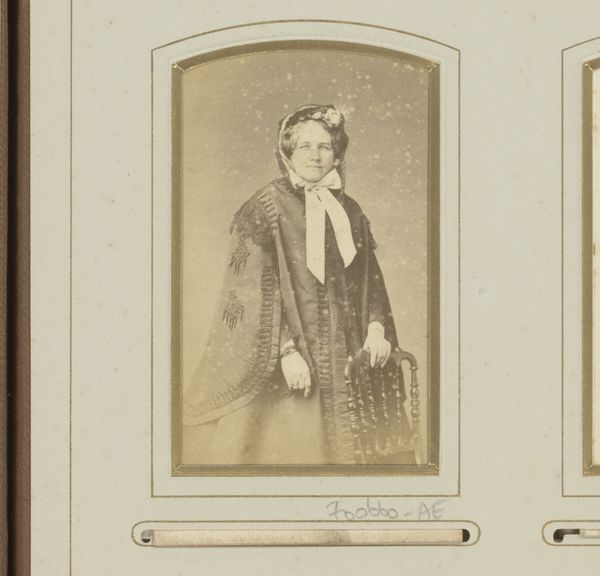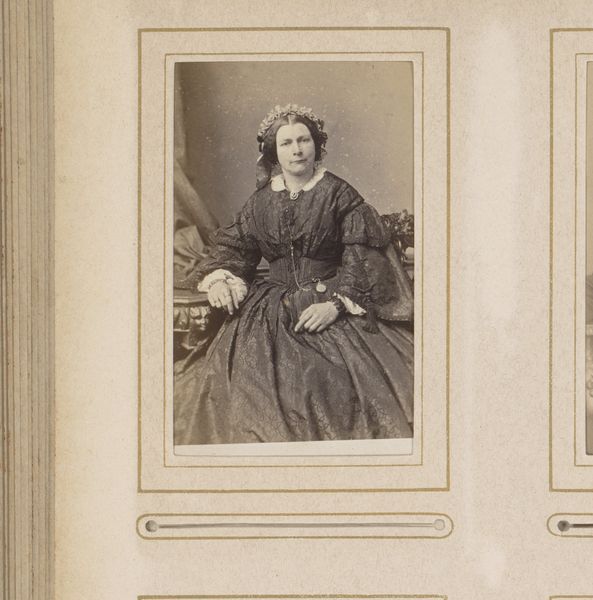
photography
#
portrait
#
photography
#
historical fashion
#
genre-painting
#
realism
Dimensions: height 85 mm, width 52 mm
Copyright: Rijks Museum: Open Domain
Editor: This is a photograph from somewhere between 1860 and 1900, titled "Portret van een staande vrouw in cape met muts en kap" – which translates to "Portrait of a standing woman in a cape with bonnet and hood." It's striking how formally she's dressed, almost austere. What can you tell me about this piece? Curator: It's a powerful image, isn’t it? Looking at this portrait, I’m immediately drawn to the social implications embedded within it. The sitter's attire is undeniably linked to a specific class and possibly even a certain social role – perhaps within religious or charitable organizations. Consider the limitations placed upon women during this era. Do you see her dress as a sign of oppression or perhaps empowerment within those confines? Editor: That's a fascinating point. I hadn't really considered it as a sign of empowerment, but perhaps it could be read as a form of visual assertion within a restrictive environment? Curator: Precisely. The very act of commissioning a portrait, of preserving one's image, could be seen as a form of agency. How does this photograph, as a historical document, speak to the broader narrative of women's visibility and self-representation during this period? What do you think the decision of her pose, or the details in the background communicate? Editor: I suppose I hadn’t fully appreciated how much this image contains. Thinking about it from a social and historical perspective really opens up new avenues for understanding it. Curator: It does, doesn't it? It's in these intersectional narratives – gender, class, representation – where the photograph truly comes alive, provoking dialogue between then and now. Editor: Absolutely. I'll definitely be thinking about this portrait in a new light now. Thanks for sharing your perspective.
Comments
No comments
Be the first to comment and join the conversation on the ultimate creative platform.
